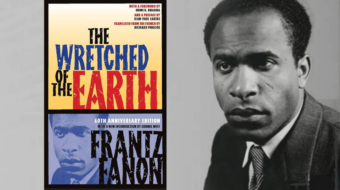
The Apollo-Soyuz Test Project (ASTP), conducted 40 years ago in July 1975, was the first joint U.S.-Soviet space flight. Its primary purpose was to symbolize the policy of détente that the two superpowers were pursuing at the time, and marked the end of the Space Race between them that began in 1957 with the Soviet launch of Sputnik.
The mission included both joint and separate scientific experiments (including an engineered eclipse of the sun by Apollo to allow Soyuz to take photographs of the solar corona), and provided useful engineering experience for future joint space flights.
Prior to ASTP, U.S.-Soviet tensions remained high while the Vietnam War was in progress (the Soviets supported the Vietnamese national liberation front). Space cooperation between the U.S. and the USSR was unlikely any earlier, but by mid-1975 the Vietnam War was over.
Neither side gave the other much news coverage of their achievements in space. Although both sides had severe criticisms of each other’s engineering, focused on issues of manned control vs. automation, American and Soviet engineers settled their differences for a possible docking of American and Soviet spacecraft in a series of unpublicized meetings in 1971 in Houston and Moscow. The plan called for an androgynous docking system between the two ships that would allow either to be active or passive during docking.
In April 1972, the U.S. and the USSR signed an Agreement Concerning Cooperation in the Exploration and Use of Outer Space for Peaceful Purposes.
ASTP was made possible by the post-Vietnam thaw in relations, and sought to enhance the improving relations between the U.S. and USSR. According to Soviet Premier Leonid Brezhnev, “The Soviet and American spacemen will go up into outer space for the first major joint scientific experiment in the history of mankind. They know that from outer space our planet looks even more beautiful. It is big enough for us to live peacefully on it, but it is too small to be threatened by nuclear war.” Both sides recognized ASTP as a political act of peace.
ASTP was the first space mission to be televised live during the launch, while in space, and during the landing. Furthermore, Soyuz 19 was the first spacecraft to which a foreign flight crew had access before flight. The Apollo crew were permitted to inspect Soyuz 19 as well as the launch and crew training site, an unprecedented sharing of information with Americans about any Soviet space program.
The Soyuz and Apollo flights launched within 7.5 hours of each other on July 15, and docked on July 17. Three hours later, the two mission commanders, Thomas Stafford and Alexey Leonov, exchanged the first international handshake in space through the open hatch of the Soyuz, occurring over the town of Metz, France. During the exchange, the crews were read a statement from Brezhnev, and received a phone call from U.S. President Gerald Ford.
While the two ships were docked, the three Americans and two Soviets conducted joint scientific experiments, exchanged flags and gifts (including tree seeds which were later planted in the two countries), signed certificates, visited each other’s ships, ate together, and conversed in each other’s languages. There were also docking and redocking maneuvers, during which the two spacecraft reversed roles and the Soyuz became the “active” ship.
After 44 hours together, the two ships separated, and maneuvered to use the Apollo to create the artificial solar eclipse. Another brief docking was made before the ships went their separate ways. The Soviets remained in space for five days, and the Americans for nine.
On the American side there was criticism of ASTP. Some feared that it gave the USSR too much credit in their space program, equating them with the sophisticated space exploration efforts of NASA. Some in Congress simply did not welcome peaceful cooperation with the USSR, as if this suggested there was no conflict at all between the two superpowers.
As the 1970s unfolded, with Vietnam now in the rearview mirror, other issues came to the surface which imperiled deeper superpower cooperation: the anti-colonial wars in Africa, apartheid in South Africa, and then Afghanistan and the election of Ronald Reagan. The lessening of tensions proved short-lived, but an important precedent had been established for future cooperation in space and everywhere.
Adapted from Wikipedia and other sources.










